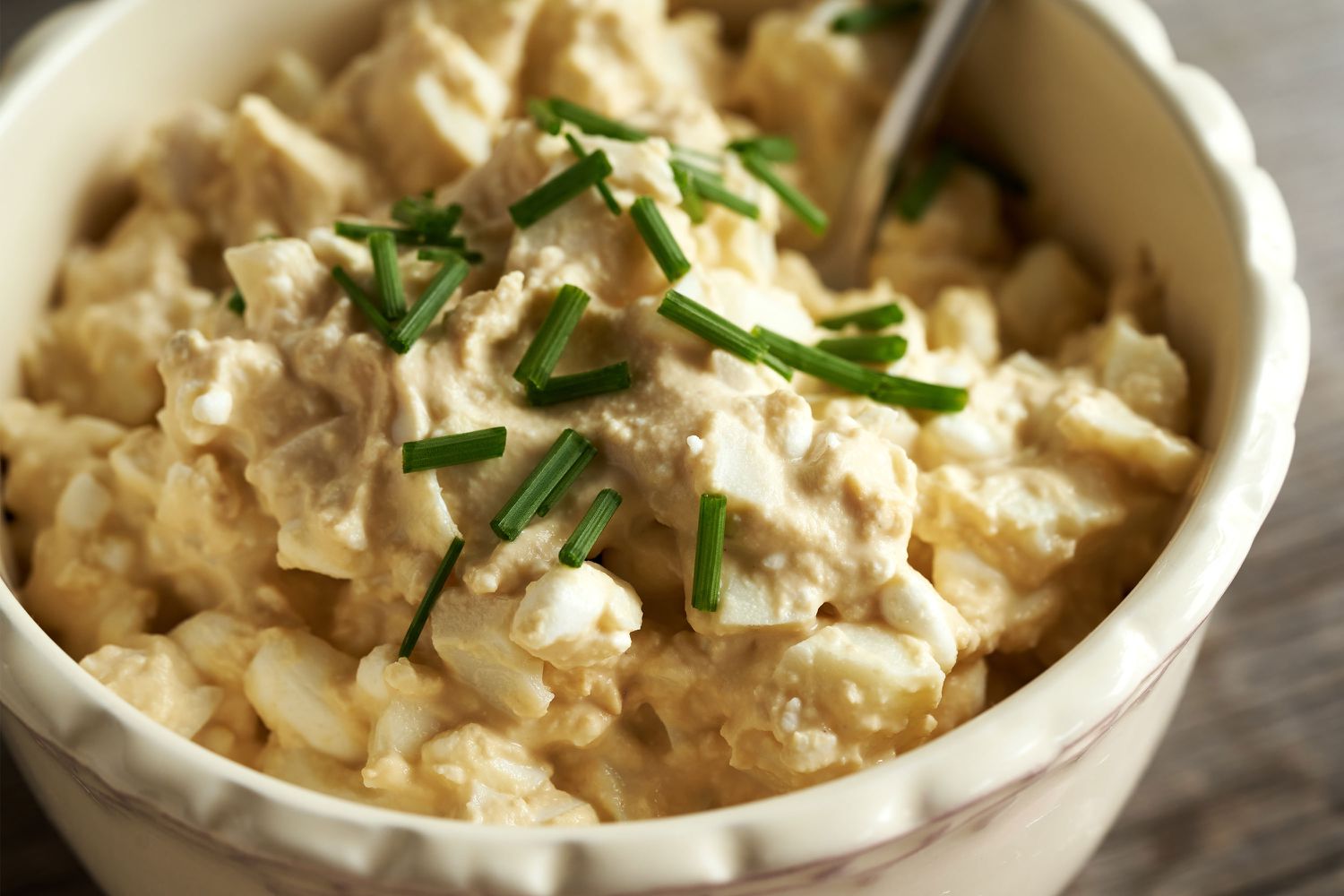Analysis of the Pros and Cons of the Cottage Cheese and Mustard Diet by Registered Dietitians

If you spend any time on social media, you likely have been inundated with the latest viral wellness or workout trend. From desk treadmills that insist they make it easier to get your steps in while you work to influencers pushing the newest greens powder, each trend promises to improve your overall health and well-being. But, the latest viral trend might leave you scratching your head.
Commonly known as the ‘cottage cheese and mustard diet’, TikTok influencer Tiffany Magee claims that her daily lunch of the combo paired with a variety of raw veggies and sausage has helped her lose 80 pounds. And it’s taken the app by storm. The hashtag ‘cottagecheesemustard’ has over 9 million views and is growing, with thousands of users posting their daily lunch of the same ingredients.
Unlike other diet trends, this one requires no juicing, chopping, or special gadgets, making it incredibly simple and easy to emulate. It’s just a plate with one chicken apple sausage and raw or uncooked vegetables like carrots, Brussel sprouts, hearts of palms, broccoli, and asparagus that you dip into cottage cheese and as much mustard as you can stomach.
The thinking goes that high-protein foods like cottage cheese and sausage will keep you full, while the mustard and veggies provide a variety of vitamins and nutrients. But, is this combo actually beneficial? Furthermore, is it safe to eat everyday? We asked three registered dietitians their thoughts. Here’s what they had to say.
Separately or combined, mustard and cottage cheese provide an impressive nutrient profile that registered dietitians love.
“Cottage cheese is a great source of protein and calcium,” says Jackie Kaminski, NASM Ambassador and Registered Dietitian. “Additionally, raw fruits and vegetables are packed with fiber and antioxidants which can help increase satiety, promote gut health, and provide the body with the essential vitamins and minerals it needs. Similarly, mustard also contains antioxidant properties that can help fight off inflammation and increase good bacteria in the gut.”
A half-cup portion of cottage cheese provides 12 grams of protein and contains all of the essential amino acids. It's an excellent source of the antioxidant selenium which aids in bone-building, and provides three B vitamins – B12, riboflavin (B2) and pantothenic acid (B5), which are important for metabolism.
Mustard is made from the seed of the mustard plant, so it is a plant-based food and thus will have some antioxidant properties. Mustard is mainly used as a condiment and is generally consumed in small amounts, so it will not provide significant amounts of essential nutrients or calories, but packs a lot of flavor and is a great alternative to higher calorie condiments like ranch dressing or barbecue sauce.
And because cottage cheese has a pretty mild flavor it is the perfect food to level up recipes or simple meals or snacks, explains Erin Coffield, RDN, LDN with the National Dairy Council.
“That goes for mustard, too. Mixing in a yellow mustard, spicy mustard, or mustard powder will give cottage cheese a flavor burst,” says Coffield. “Mustard and cottage cheese – like most foods - fit into balanced, healthy eating patterns that can be part of weight management plans when paired with portion and calorie awareness and physical activity.”
Like any other ‘weight loss miracle’ claim, viral trends tend to recruit large interest, which eventually wanes over time as the next trend emerges. People want an easy fix, and anyone who shows they've dropped significant amounts of weight following a specific routine always gets attention from the public, says Kaminski.
“The biggest pitfall of this diet is the lack of variety and elimination of major food groups,” she says. “Also, the fact that this diet was made up by someone with zero nutrition background and it is a diet that has not been tested for its efficacy. Additionally, a limited menu to select from can lead to diet fatigue, making long term adherence very difficult.”
From a nutritional standpoint, cottage cheese and mustard are both very high in sodium, and for individuals with hypertension issues, this can significantly exacerbate this condition. While cottage cheese is a great source of protein, it should not serve as the only protein option in one's diet. Cottage cheese lacks iron and essential fatty acids that are found in other protein sources like beef and salmon. So, only consuming this source of protein can lead to some major nutrient deficiencies.
“For others, such a strict diet can damage one's relationship with food causing them to fall into disordered eating patterns and feelings of failure if the diet is not followed 100% of the time,” says Kaminski.
This meal is also very low in carbohydrates and might not feel sustainable long-term. If you need food variety, consuming other high protein options such as chicken, turkey, fish, tofu, and beans or legumes with other types of veggies can provide the same benefits without you getting tired of what you’re eating.
And because the meal is heavily reliant on raw vegetables, the high fiber content can leave some people with digestion issues that can lead to gas and bloating. Individuals with thyroid issues, such as hypothyroidism or an underactive thyroid, may notice a change in their thyroid function while consuming large amounts of raw cruciferous vegetables, says Danielle Crumble Smith, RDN with Top Nutrition Coaching.
“In those cases, I would recommend cooking [vegetables] prior to consumption, as cooking can help reduce the goitrogenic effect,” says Crumble Smith. ”Additionally, it's essential to maintain an adequate intake of iodine in the diet, as iodine is essential for thyroid hormone synthesis.”
Good dietary sources of iodine include iodized salt, seafood, dairy products, and certain seaweeds, she adds.
When it comes to getting health advice from social media, experts agree to proceed with caution. “If it sounds too good to be true, it probably is not reliable,” says Coffield. “If the trend seems safe and appealing to you, then try it. And, if it sounds dangerous, go with your gut and don’t try it.” It's also wise to consult with a healthcare professional to see if a shift in your lifestyle is appropriate.
While building a daily plate of cottage cheese, mustard, and veggies might work for one influencer, it doesn’t mean it will work for you. For a balanced and healthy plate, Kaminski recommends getting in at least three of the four major food groups — proteins, starches, healthy fats, and fruits and vegetables — at each meal. This looks like 30 grams or roughly 4-6 ounces of protein, half a plate of fibrous fruit and vegetables, and the rest filled with a starch (like sweet potatoes )or healthy fat (avocado or nuts).
“This balanced plate provides a healthy combination of foods that keep you full, meet your daily dietary needs, and don't spike blood sugars,” says Kaminski. Consistent blood sugars mean avoiding those energy crashes shortly after consuming a meal.
Balance truly is key, and consuming a diet filled with a variety of fresh ingredients is the key to overall health. If you see any recommendations to cut out an entire food group, think twice. Variety provides your body with the nutrients needed to function optimally.




